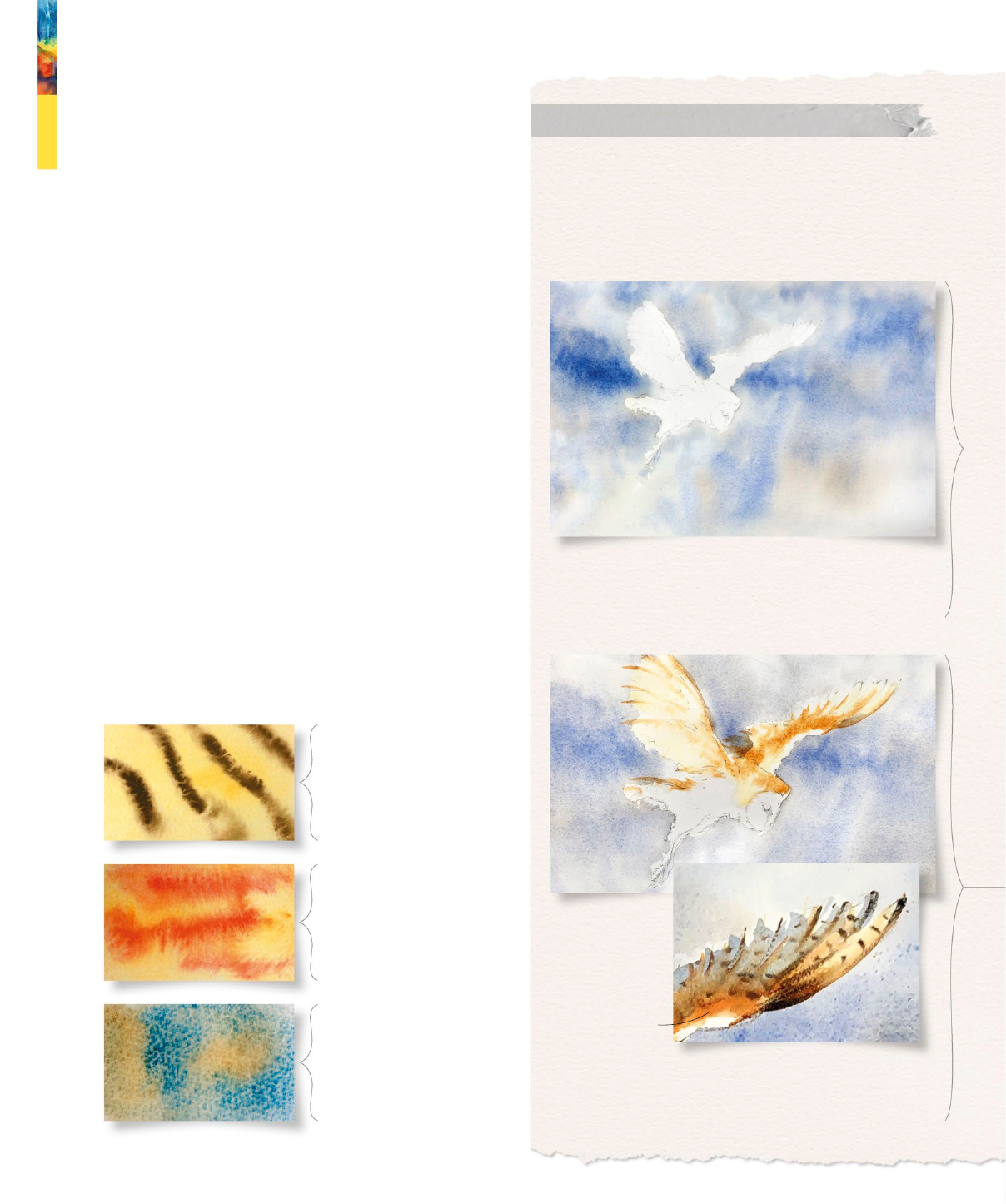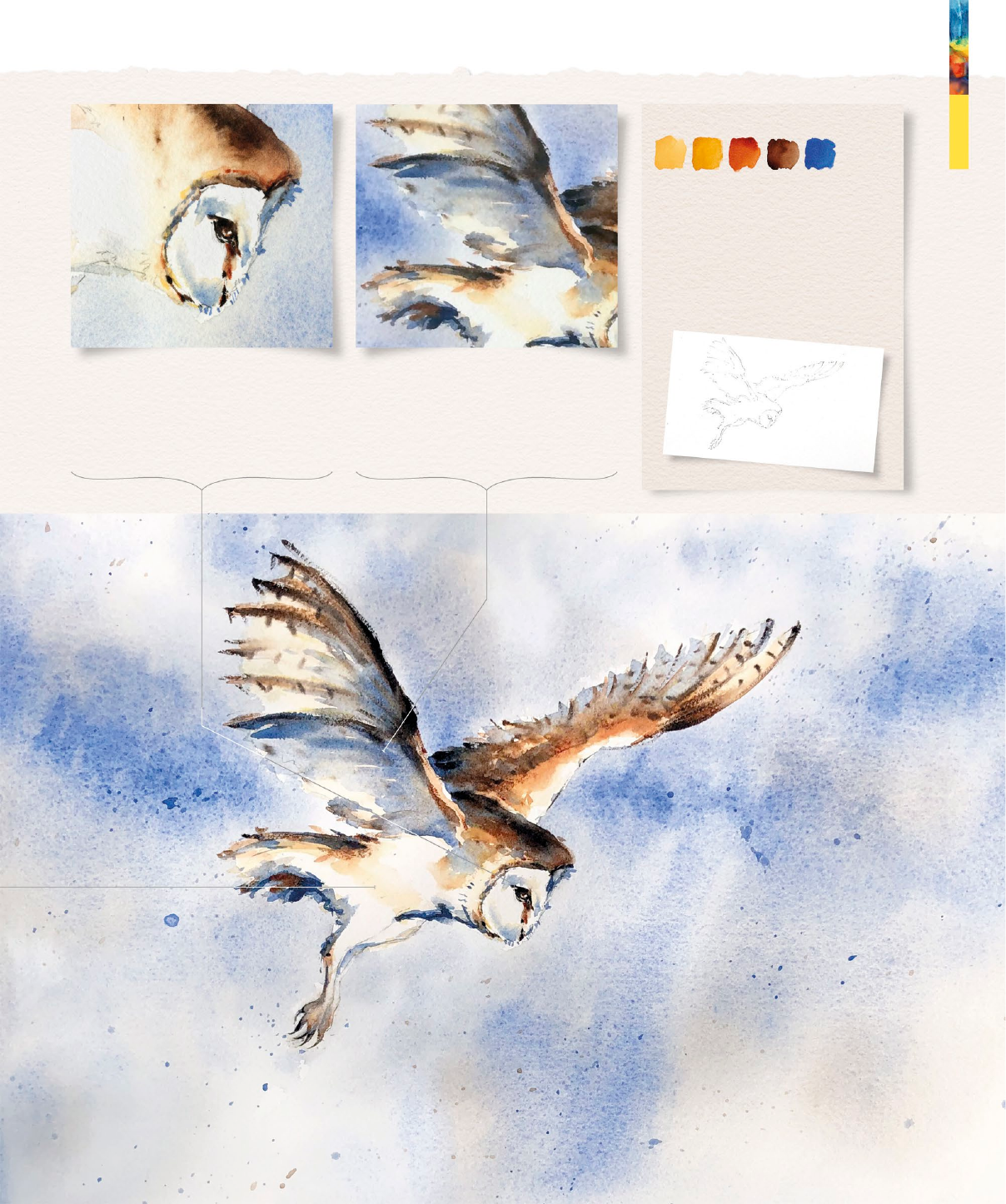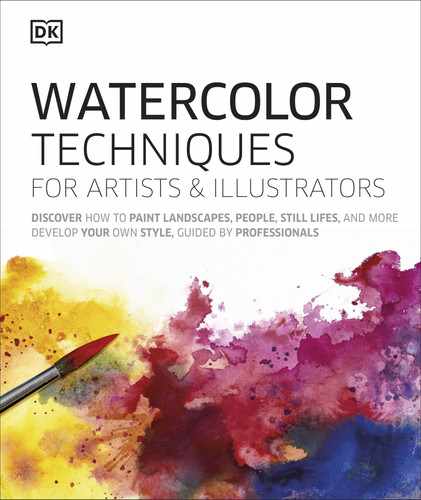
92 Intermediate | TECHNIQUES
PUTTING IT INTO PRACTICE
Here, the granulating effects of the burnt sienna and
French ultramarine produce an interesting sky with
depth. The blocking properties of Naples yellow allow
the wing markings to blend naturally.
The opaque nature of
Naples yellow stops the
brown markings from
owing uncontrollably
2
Wet-in-wet glazes
When the background is dry, paint the owl with a wet-in-wet
glaze of Naples yellow and raw sienna, taking the yellow out to the
wing tips. Add the wing bars with a swift stroke in Van Dyke brown.
1
Granulated wash
Lay loose mixes of ultramarine and burnt sienna diagonally
across the wetted paper to create a wet-in-wet background.
Tilt the board at differing angles, so the colors merge naturally.
Special effects
Knowing how certain colors behave (see Granulating,
Repelling, and Separating Pigments p.247) can enhance
your painting, creating natural effects that you may
otherwise struggle to achieve. Some pigments react by
blocking and pushing other colors away; others leave
grains of intense pigment that add random texture.
Restricting spread
This mix of opaque Naples
yellow and cadmium orange
has completely restricted the
spread of the Van Dyke brown.
The stripes are perfect for
animal markings.
Feathered bleeds
On a wet Indian yellow wash
the cadmium red struggles to
fully merge. Indian yellow likes
to run away and bleed. The
resulting effect is useful for
owers and sunsets.
Rough texture
Cerulean and raw umber are
both very granulating and don’t
like to spread evenly. When
mixed they naturally separate,
resulting in a textural effect
that is useful for painting rock.
Separated wash
ENCOURAGING REACTIONS BETWEEN PIGMENTS
Properties of certain pigments react when
mixed with others to create an effect known
as a separated wash. The reactions vary,
from a granulated texture to patterns
caused by restricted bleeds. You can use
these natural reactions to your advantage;
they can be employed over large areas to
create mottled effects for skies and water,
or to suggest more detailed patterns such
as animal markings or fabric designs.
US_092-093_Separating_wash.indd 92 02/04/2020 3:34pm

93 Separated wash
3
Face detail
Paint the eye, leaving a chink of
paper unpainted for the highlight. Use the
granulating properties of French ultramarine
and burnt sienna with dry brushwork to add
the feathered edge to the face.
4
Final shadows
Paint the shadow under the wings in
a clear wash of ultramarine. Add Van Dyke
brown to the blue wash to strengthen the
shadow under the body and tail. Add splatter
to the background for a sense of immediacy.
Owl in ight
No. 16 and no. 8 soft-hair round brushes
2 in (5 cm) hake brush
14
1
/2 x 20
1
/4 in (36 x 52 cm) cold press
140 lb (300 gsm) watercolor paper
You will need
Raw sienna
Burnt sienna
Van Dyke
brown
French
ultramarine
Naples yellow
US_092-093_Separating_wash.indd 93 02/04/2020 3:34pm
..................Content has been hidden....................
You can't read the all page of ebook, please click here login for view all page.
